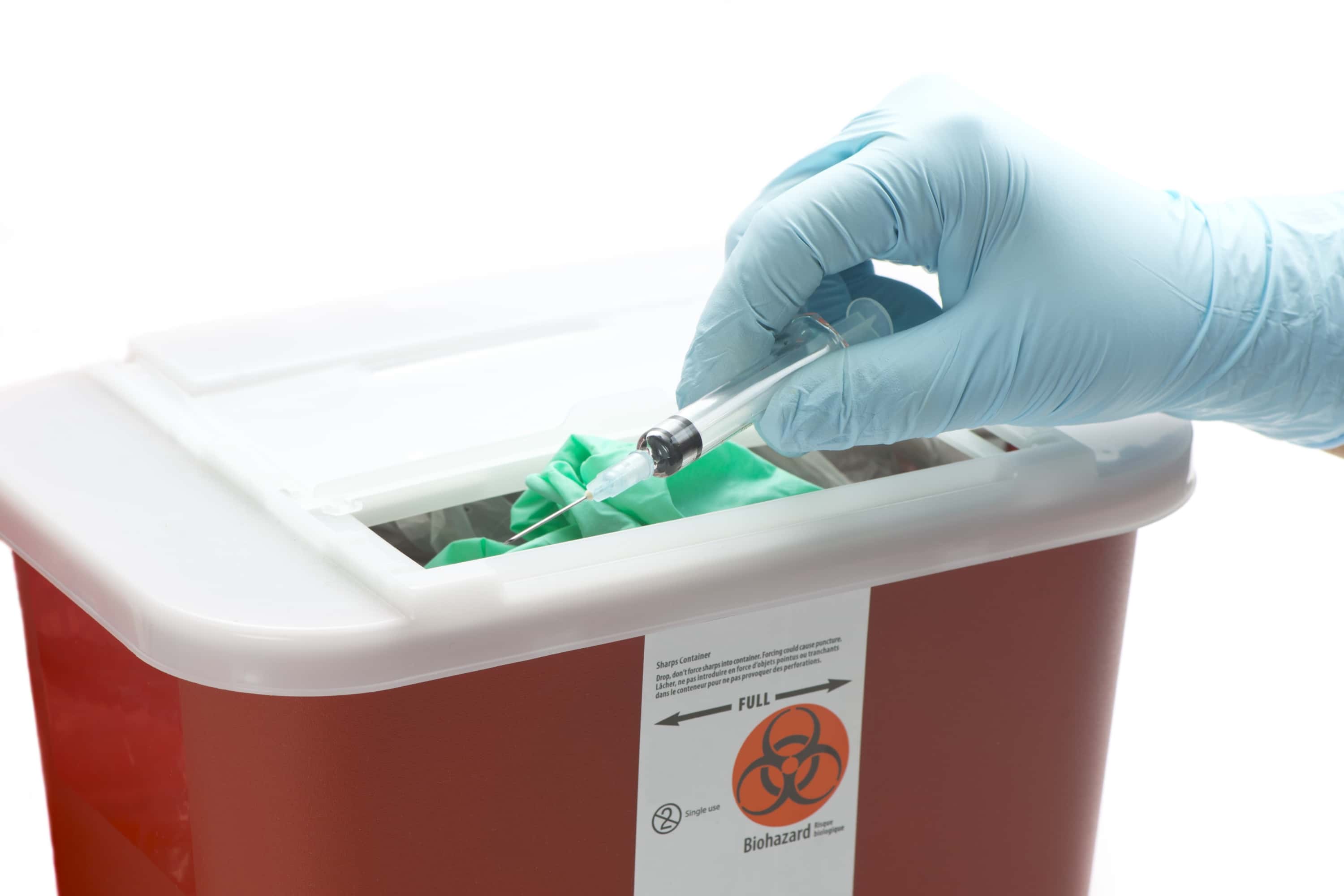
Sharps injuries are an overrepresented problem in the peri- and intraoperative setting. Anesthesia providers and perioperative nursing staff are at particular risk for sustaining needle stick injuries, as their roles involve frequent administration of medications and placement of lines, often under urgent or stressful circumstances. Surgical personnel are also at risk given the use and necessary passing of sharp instruments between team members intraoperatively.
The Association of Perioperative Registered Nurses (AORM) regularly publishes guidelines and evidence-based recommendations to promote sharps safety and reduce the number of needle stick injuries in the perioperative setting.
These recommendations include implementing the use of safety-engineered devices. For scalpels, options include retractable scalpel blades, shielded or sheathed scalpel blades, and scalpel blade removal devices. Safe tissue closure devices include tissue staplers and adhesives in lieu of suturing. A systemic review of 14 randomized controlled trials found no significant difference between sutures and adhesives in regard to infection, patient and user satisfaction, and cost; however sutures were better in minimizing wound dehiscence and were faster to use.
Whenever possible, needleless systems should be used for collecting blood or bodily fluids after initial access establishment. Administering medications should be done without needles whenever possible (e.g. using IV ports that don’t require puncture). When needles are required, they should have safety engineered features. These include sliding sheaths that cover needles after use, hinged needle guards, sliding needle guards, and retractable needles. Safe practices include not recapping needles, or if recapping is necessary and a safe needle device is unavailable, using a one-handed scooping technique.
Using needleless or blunt entry devices to withdraw contents from multi-dose vials is another recommendation put forward. When opening glass ampules, using a disposable or reusable ampule breaker (which could be as simple as a 4×4 gauze) can decrease injuries.
Using a puncture-resistant sharps containment device is important in sharps disposal after use. In the operating room, a neutral zone should be implemented during passing of sharp instruments – i.e. the instruments are put down and picked up rather than passed hand to hand. A no-touch technique should be used when handling sharps to reduce manual handling – i.e. not manipulating suture needles with hands while loading or repositioning, using blunt instrument holders instead.
In addition to implementing strategies to prevent sharps injuries, health care facilities should also have a plan for post-exposure care that is familiar and readily available to their workers.
Sharps safety is an important concern in the perioperative setting, and it is paramount that both providers and facilities be aware of strategies to reduce the incidence of sharps-related injuries.
References
Dumville J.C., Coulthard P., Worthington H.V., et al: Tissue adhesives for closure of surgical incisions. Cochrane Database Syst Rev 2014; 11: pp. CD004287
Spruce, L. Back to Basics: Sharps Safety. AORN J. 2016 Jul;104(1):30-6. doi: 10.1016/j.aorn.2016.04.016. Sharps Safety in the Perioperative Setting

